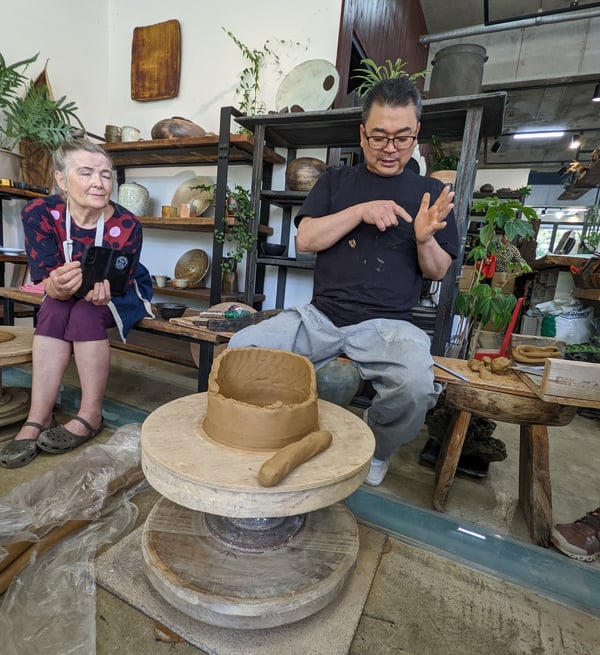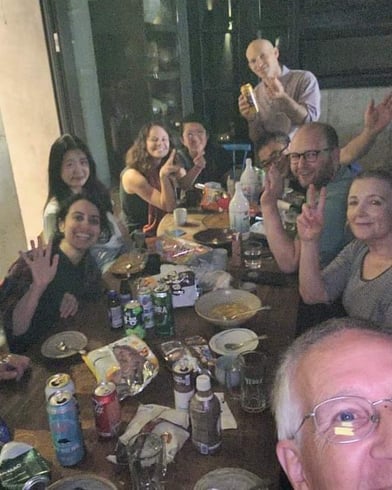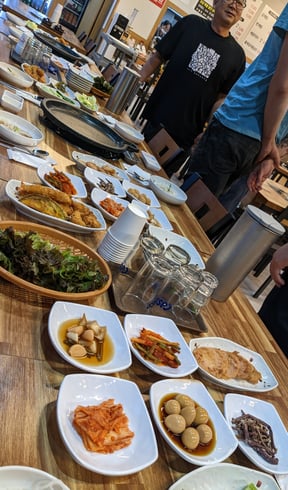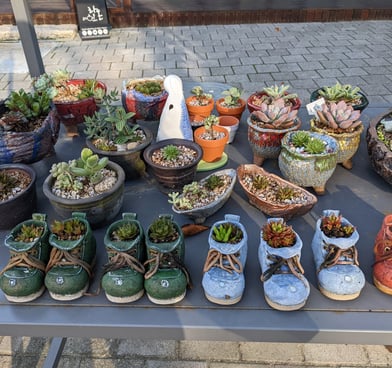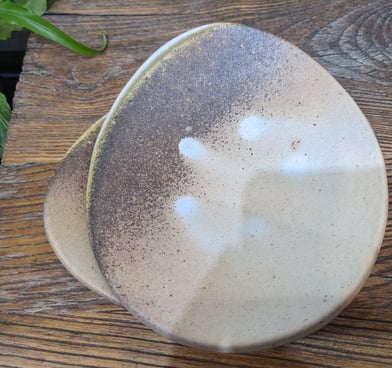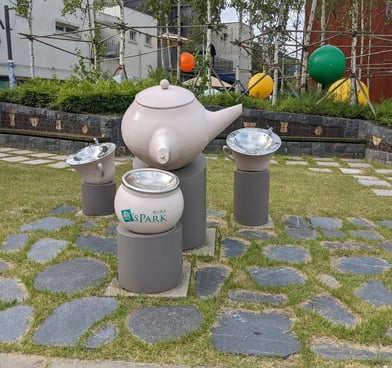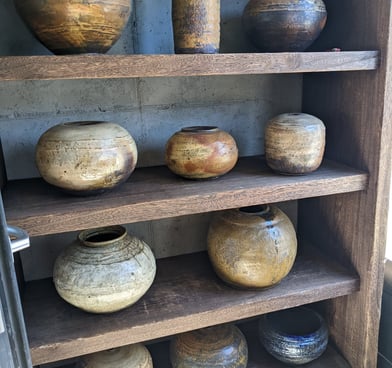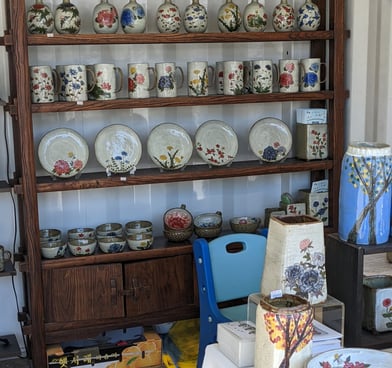Learning Korean Culture in a Clay Class
A weeklong class with Korea Master potter taught me so much, and not just about ceramics
POTTERY
As some of you may know, I've been a hobby potter for a number of years. It became my primary "COVID hobby", and the lock-downs (which cancelled my favorite classes at the Recreation Centers for over two years) gave me the push to invest in my own little studio. Thanks to my generous father, I was able to get a very low rent corner of his woodworking and makers' building, and I purchased a ceramics wheel, kiln, clays, tools, and glazes of my very own. Absolutely loving this greater access and losing myself for hours in the creation of all sorts of clay endeavors, I decided to take my ceramics more seriously. Hence the creation of DMarie's ClayHouse website! I hope to make new creative pieces on commission going forward.
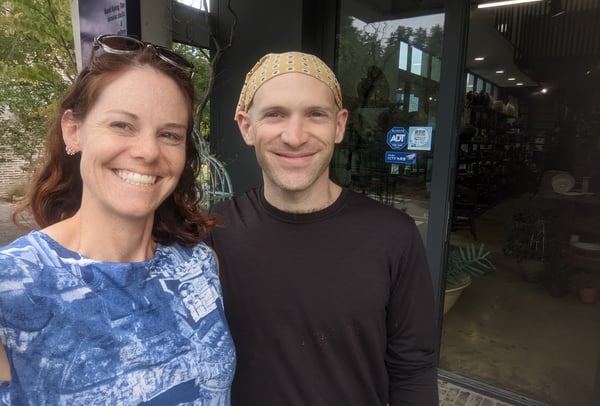

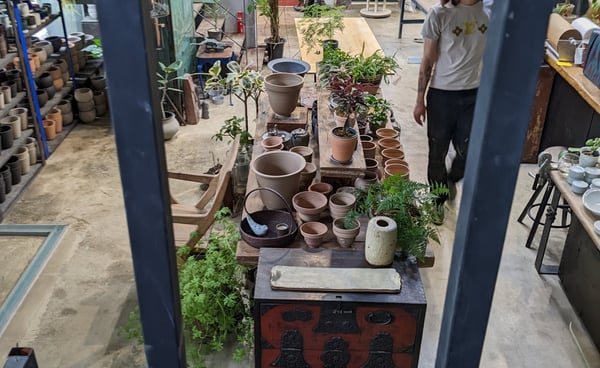

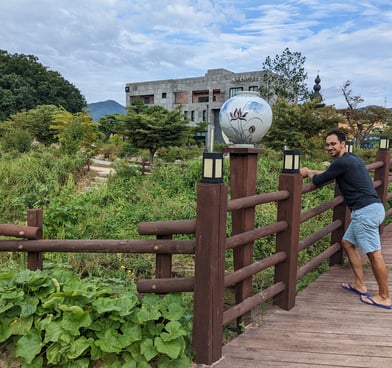

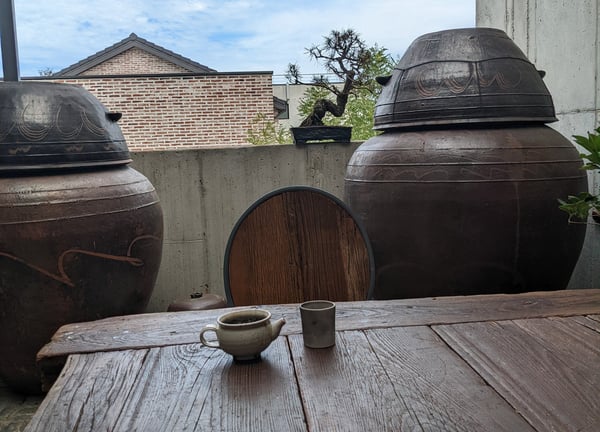

As we planned this trip, one of my major goals was to try and take a serious ceramics course (or several) in one of these countries. Asia especially, is the birthplace of ceramic arts and has so many ancient and beautiful methods difficult to find in the west that I have hoped to learn about.
After some serious Googling, I found this Masterclass. It seemed perfect; an all-inclusive live-and-learn experience, in English, a full week long, and taught by a Korean ceramics master! After stressing over my frugality and the somewhat high price tag, I took the plunge and anchored us in a small ceramic's focused village for 2nd week of our trip. I later learned that I was even more fortunate than I initially presumed. Master Kwak and his apprentice Marco (more on them in a moment) only teach these courses once a year in a single month window and this was their first course since COVID. There also isn't, to their knowledge or my Google searching, anything else equivalent in Korea or Japan.1
I had signed up for the one-week course in Onngi, a traditional Korean method of vessel-making that is often used to make large pots for kimchi and other fermenting foods.2 In order to keep this post from being excessively long, I'm going to focus on the experience I (and Shadie) had while taking the Masterclass. I have a separate post, "Onngi are Oversized Pots?" for those more interested in the craft of Onngi itself.
But before going any further, I should say more about the two amazing instructors. Kwak Kyungtae (aka Master Kwak) has been doing ceramics for more than 40 years. He started as an apprentice in a traditional onngi-making shop, and quickly excelled as an artist in his own right. He is actually officially recognized as a "National Living Human Treasure" in this traditional craft by the Korean government, one of just a few dozen such individuals in the world. Marco Minetti, an Italian who committing to ceramics arts as his career, became master Kwak's apprentice in his early twenties, in so doing, moved to live with the master's family, learned the Korean language, and worked long hours in the studio while learning both onggi and wheel-throwing technique from him for five years. Marco now has his own practice and studio, MinettiDesign, in Northern California is a renowned potter in his own right.
Footnotes:
1) There do seem to be a variety of couple hour, day-long, or couple day workshops in other places, most are not taught in English and there don't appear to be any multi-day serious courses.
2) Along with this video I found on YouTube, that's about all I knew about Onngi going into the course. I obviously learned a lot more about the craft and its purpose along the way that I want to share at least a little bit about here, although with a preface that language and cultural barrier likely means some of my understandings are going to be inaccurate. While Onngi is most well known as the craft of making kimchi vessels, which are also generally referred to as Onngi, it was actually used to make all sorts of vessels, large and small.
As the master does not speak English, it was with Marco I had emailed extensively with prior to arrival. I had asked him all sorts of questions, in part because Shadie would be tagging along, and would be working remotely for Google while were and thus would need internet and a workspace. It turns out this Masterclass was, in many ways, Marco's idea and endeavor, setting it up and developing all the materials in English as well as providing interpretation for Master Kwak throughout the course. And it was Marco, who welcomed me upon arrival and was the most gracious of hosts throughout our time there. Marco was always checking to make sure I got my morning tea (most others drank coffee), knew my way around, and answered my many, many questions with enduring patience and kindness.
I arrived the first morning of the seven-day class toting all my bags, having taken several trains and a taxi down from Seoul while Shadie went off to check out the Google office for the day. Marco led me on a quick tour of the studio, and explained that all the other students had actually already been here for a week, having signed up for the one other course taught, in wheel throwing. As we all sat down to a luscious looking breakfast in the studio dining room, I could tell that the seven other students had already bonded and were cheerful and chatty as they ate.
The students came from all over the place: two, Chris and Kat, were also from the US, both in California; two hailed from Great Britain, Claire and Kian; Ruby was from Australia; Danyah came from Saudi Arabia; and Jisoo rounded out the class as the only native from South Korea.
After breakfast, we headed downstairs into the Onngi space, and Master Kwak gave his first demonstration of the onngi steps and techniques, while Marco diligently interpreted in English. Like any high-caliber craftsman, Master Kwak has his very precise and particular way of doing things, steeped in tradition and (or) efficiency. We marveled as he built up a pot several feet high in a matter of minutes, using a rounded base, wooden tools designed specifically for the task, and thick, long clay coils.
And then we got to practicing! We spent several hours working at the technique for building coils, a sort of sideways tossing action that stretches the clay as it falls to the table (although traditionally this is done on the floor), maybe most akin to how you see old-school pizza or hand-pulled noodles made. We used a slightly different technique, tossing a clay piece down with a turn, to make a rounded base. After that, we all attempted the difficult method of attaching the clay coils to the base, using a precise twisting the hands against each other, with the clay being pushed out and raised in between. By lunch break, we were all exhausted. Our higgly-piggly pots were smashed down to make recycled clay, and we headed off in a mini-van to get lunch at a restaurant in town. After lunch we were back at it, tossing, rounding, twisting, and turning. Try, smash, rinse, repeat. By dinnertime, some nine hours after the first demo we were exhausted! My fellow classmates told me that despite very large and elaborate meals (and alcohol), none of them had gained weight because the clay practice was so physically demanding.
And eat well we did! Shadie would finish up work and join us for most lunches and dinners. These were either at nearby establishments, each of the proprietors of which knew Master Kwak well, and heaped many dishes, beers, and soju (a Korean rice wine only vaguely similar to Japanese saki) family style upon us, or made by Master Kwak's fun wife or mother. The homecooked meals were always the best, but each and every meal felt like a holiday celebration filled with cheerful conversation around a big table and a bit too much to drink. One especially memorable such meal was, in fact, a holiday, Chuseok, which is probably most akin to America's Thanksgiving. At these meals, we learned about certain Korean customs, like how all items are accepted with two hands, how never to pour your own glass (especially alcohol) and how if you shouted gambe! when clinking glasses, it doesn't just mean cheers but also that you must down your whole glass. It was also the chance to get to know our fellow students and chat (via interpreter or, poorly, via Google translate or Papago apps) with Master Kwak, his wife, and his staff.
Another memorable part of the week was the location itself. Master Kwak's studio is located in Ye's Park, a newish development, the size of small sub-division, that's entirely made up of some 200 ceramics artisans live-work studios. Built on the edge of the large suburb city of Icheon, about two hours from Seoul center, Ye's Park was sponsored by the government to agglomerate the many artisans that already lived in the region into one more cohesive space. The development is built around two streams with lovely walking paths, and at every turn one found artistic touches, not only in the works and wares of the studio shops, but also on the light-posts, or on the streets. On weekends, they have live musical performances, food stalls, and artists put out their wares on the street. It's like a First Friday times five!
It was a lovely and relaxed place to hang out here for a week overall. Although its bucolic isolation did end up being a pain for Shadie, as there was no transit and no obvious taxi services to get out of Ye's Park and get into town to explore. Still, we both greatly enjoyed the unique experience of being there and getting a small glimpse into a real way of life here in Korea.
